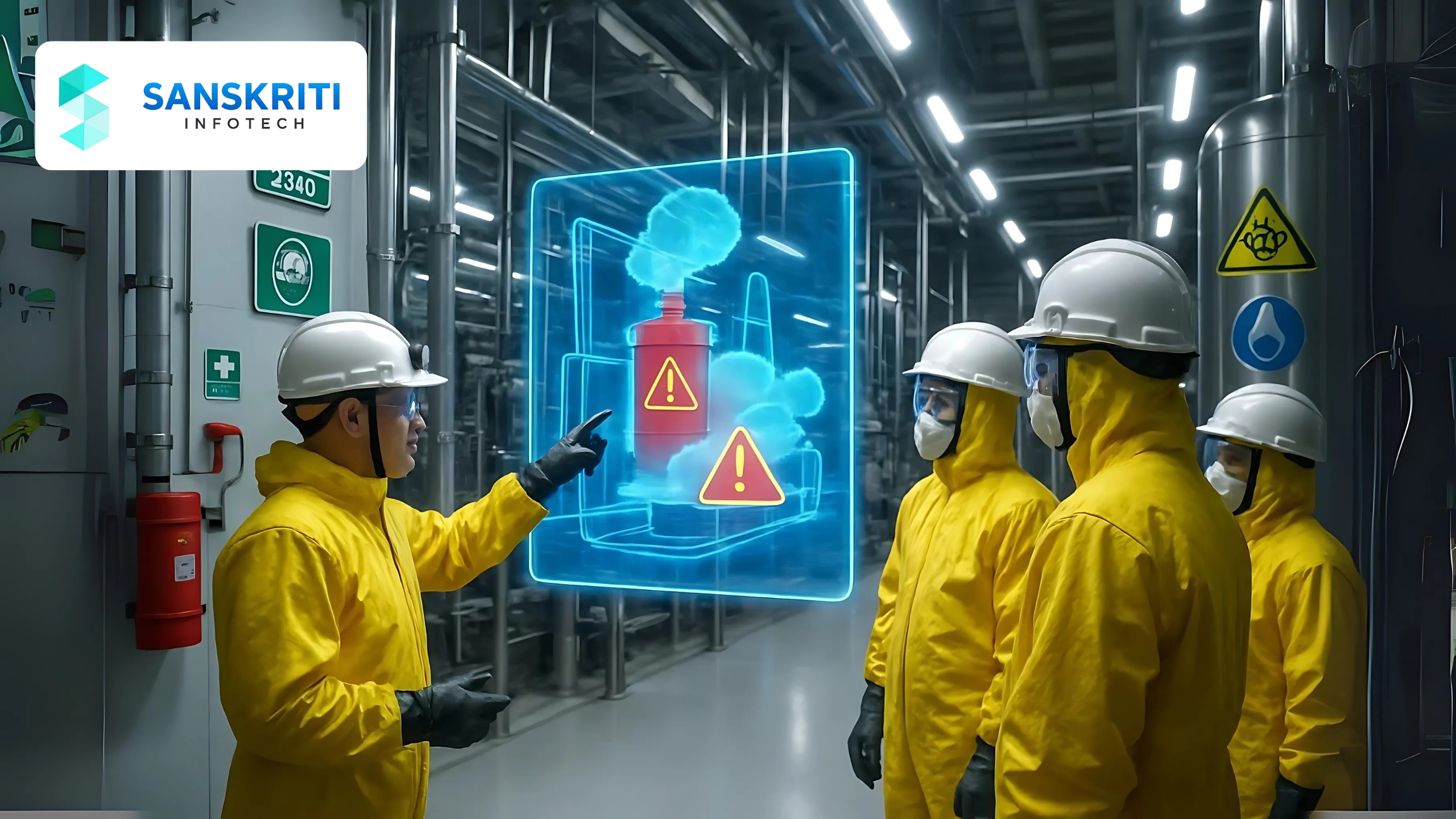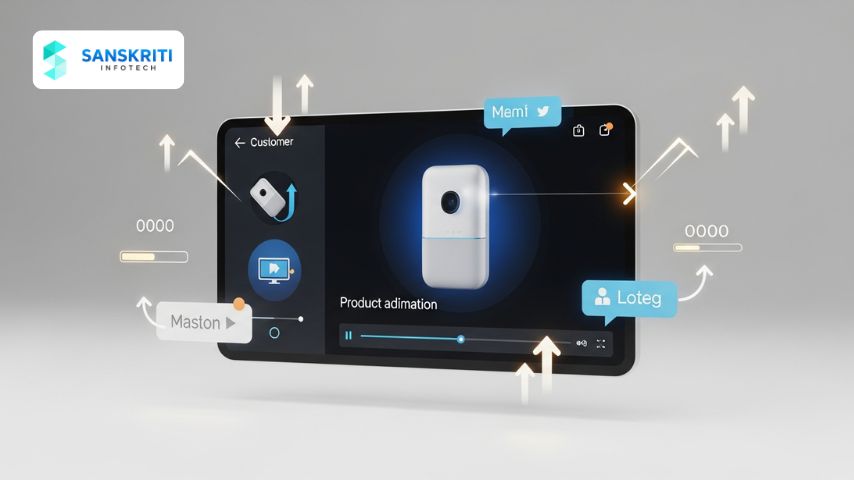Table of Contents
Introduction
Safety is not just a regulatory requirement in chemical plants—it’s a way of life. Every process, procedure, and piece of equipment must be operated with precision and caution due to the inherent risks of working with hazardous chemicals and high-pressure systems. This is why training plays a critical role in keeping employees, contractors, and the facility safe.
But traditional safety training methods like printed manuals, PowerPoint presentations, and long classroom sessions are no longer enough. They often fail to engage employees, especially those working on the ground who need to understand complex procedures visually and practically.
Enter the 3D-animated safety training video—a transformative tool that brings clarity, realism, and engagement into industrial training. It allows chemical plant operators to deliver highly visual, consistent, and impactful training without exposing workers to real risks.
In this blog, we’ll uncover the top 5 benefits of using 3D-animated safety training videos in chemical and process plants—and why forward-thinking companies are adopting them to drive better safety outcomes.
Enhanced Visualization of Complex Chemical Processes
One of the biggest challenges in chemical plant training is explaining complex chemical reactions and interdependent systems. Many employees struggle to fully grasp processes like:
– Distillation
– Catalytic cracking
– Neutralization and pH balancing
– Emergency venting or flaring systems
– Batch versus continuous processing
While diagrams and static images offer limited context, 3D animations provide a dynamic, detailed, and interactive look at these processes. You can visualize what’s happening inside pipes, tanks, valves, and reactors—something that’s otherwise invisible to the human eye.
Animations can also slow down or zoom into critical operations, making it easier for trainees to understand cause-and-effect relationships. This leads to better comprehension and fewer operational errors.
Higher Engagement and Long-Term Knowledge Retention
Traditional safety training often faces a common hurdle: lack of engagement.
Employees may tune out during monotonous lectures or forget what they read in dense manuals. And in high-risk industries like chemical manufacturing, a forgotten safety step can have dangerous consequences.
This is where 3D-animated safety training videos excel. They provide a multi-sensory learning experience by combining visuals, voiceovers, motion graphics, and real-life simulations. This format stimulates curiosity and encourages active learning.
Multiple studies have shown that visual learners retain up to 80% more information when training involves rich multimedia content. When employees see real-world scenarios play out through animation—like what happens if a PPE protocol is ignored or a spill is mishandled—they’re more likely to remember and apply that knowledge on the job.
Realistic Hazard Recognition and Risk Awareness
Chemical plants are filled with hidden dangers—from corrosive substances and volatile compounds to confined spaces and combustible dust.
Most traditional training doesn’t convey these risks vividly enough. But a 3D-animated safety training video can replicate real-life hazard scenarios with pinpoint accuracy. For example, you can visually simulate:
– A fire caused by improper grounding during chemical transfer
– A toxic leak from a compromised valve seal
– An explosion due to incompatible chemical mixing
– Human error leading to a near-miss or accident
These simulations allow employees to visually identify unsafe behaviors and risky conditions before they encounter them in the real world. Over time, this builds sharper situational awareness and encourages a culture of safety mindfulness throughout the facility.
Consistent and Scalable Training Across Facilities
Many chemical companies operate multiple plants across regions or countries. Keeping training consistent, up-to-date, and culturally adaptable in such cases can be difficult—especially if relying on local trainers or printed manuals.
A 3D-animated video ensures uniform safety messaging and process understanding, no matter where your facilities are located. Some key advantages include:
– Multilingual voiceovers and subtitles
– Easy distribution via LMS, intranet, or mobile devices
– Standardized onboarding for new hires and contractors
– Quick scalability for training large workforces or third-party vendors
This standardization becomes crucial during audits, ISO or OSHA inspections, and when implementing global best practices across operations.
Safe Simulation of Emergency Response Scenarios
Chemical plants often deal with low-probability but high-impact emergencies, such as:
– Gas leaks
– Chemical spills
– Flash fires
– Equipment failures
– Explosions
Practicing emergency responses in real environments can be dangerous, expensive, or simply impossible. But with 3D animation, you can safely recreate realistic emergency situations and walk employees through appropriate response steps:
– Activating alarms
– Initiating emergency shutdown procedures (ESD)
– Donning emergency PPE and using SCBA
– Evacuation routes and muster points
– Communicating with first responders
Bonus Benefits
While the top five benefits above cover the core advantages, here are a few additional perks worth noting:
✅ Cost-Effective in the Long Run:
While initial production of a high-quality 3D video requires investment, it eliminates recurring training costs like travel, venue booking, trainer fees, and printed materials. The ROI increases over time as more employees go through the same content.
✅ Compliance and Documentation:
Most compliance audits require proof of training. 3D-animated training videos can be hosted on LMS platforms that automatically track employee progress, quiz results, and completion certificates—making documentation easy and audit-ready.
✅ Customization & Branding:
You can fully customize 3D animations with your own plant layout, machinery, branding elements, safety gear, and company-specific protocols—making the training content feel truly “yours.”
Conclusion
As chemical plants evolve with digital technologies, safety training must evolve too. 3D-animated safety training videos are not just an innovation—they’re a necessity in environments where the cost of a mistake can be catastrophic.
From simplifying complex procedures to preparing employees for emergencies, these videos are changing the safety training landscape. They provide clarity, consistency, and confidence—empowering your workforce to operate safely, efficiently, and in compliance with the highest safety standards.
Ready to Transform Your Safety Training?
At Sanskriti Infotech, we specialize in creating high-impact 3D animation videos tailored for chemical plants and process industries. Our solutions cover:
– Induction & onboarding
– Process safety training
– SOP demonstrations
– Emergency simulations
– Incident re-creations
Whether you’re a plant manager, HSE officer, or L&D professional—let’s make your safety training more visual, effective, and memorable.
📞 Schedule a Free Demo
📧 Contact us at info@sanskritiinfotech.com
🌐 Visit www.sanskritiinfotech.com






